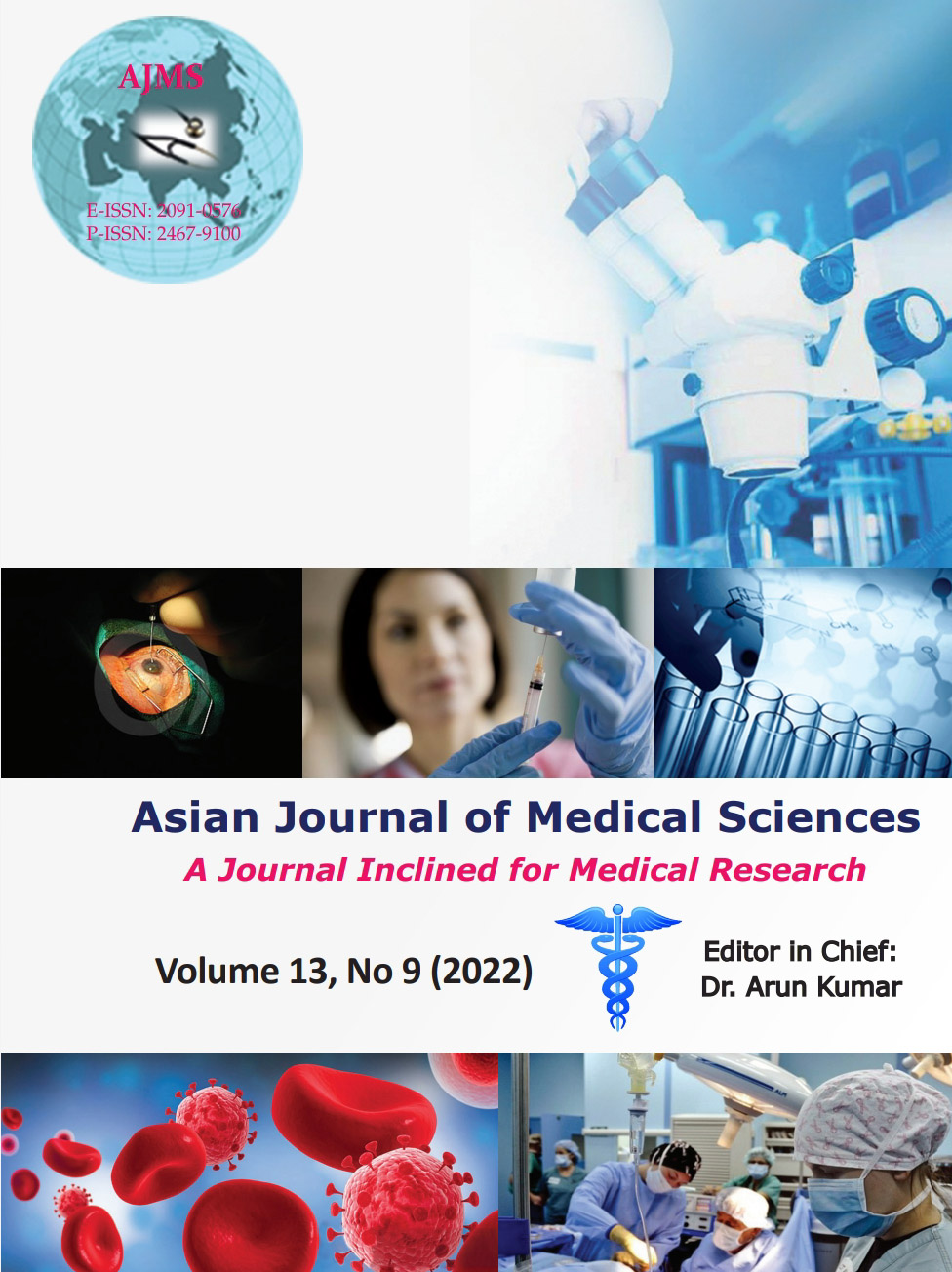A cytological study on peripheral lymphadenopathy in a tertiary care center with special reference to tuberculous lymphadenitis
Keywords:
Fine-needle aspiration cytology; Peripheral lymphadenopathy; Tuberculous lymphadenitisAbstract
Background: Fine-needle aspiration cytology (FNAC) is the most common, cost-effective, and time-efficient cytological diagnostic procedure and is used routinely in cases of swelling or lymph node enlargement at accessible sites. FNAC plays an important role in diagnosing benign and malignant lesions of peripheral lymphadenopathy cases and also provides a valuable screening test.
Aims and Objectives: In this study, we aimed to evaluate various cytomorphological manifestations of lymphadenopathies and the suggestive cases of tuberculous lymphadenitis were divided based on their cytomorphological patterns.
Materials and Methods: The current prospective study was conducted in the Department of Pathology, SSMC, Rewa, M.P. A total of 150 cases of peripheral lymphadenopathy were subjected to FNAC and were categorized based on their cytological findings. The cases which showed features suggestive of tuberculous lymphadenitis were further categorized into four distinct cytological patterns (I to IV).
Results: Out of 150 cases of peripheral lymphadenopathies, the most common lesion diagnosed cytologically was reactive lymphadenitis (41.3%) followed by tuberculous lymphadenitis in 38.7% cases. The different patterns of tuberculous lymphadenitis on microscopy were divided into four categories from I to IV with pattern I being the most frequently seen (53.5%).
Conclusion: Our study highlighted the various morphological patterns of lymphadenopathy and the most common lesion diagnosed was reactive lymphadenitis. The present study found that FNAC is an effective screening tool for diagnosing benign and malignant lymphadenopathies and also to study the cytomorphological patterns in cases of tuberculous lymphadenitis. It reduces the need for surgical intervention and for the early diagnosis and management of patients with peripheral lymphadenopathy.
Downloads
Downloads
Published
How to Cite
Issue
Section
License
Copyright (c) 2022 Asian Journal of Medical Sciences

This work is licensed under a Creative Commons Attribution-NonCommercial 4.0 International License.
Authors who publish with this journal agree to the following terms:
- The journal holds copyright and publishes the work under a Creative Commons CC-BY-NC license that permits use, distribution and reprduction in any medium, provided the original work is properly cited and is not used for commercial purposes. The journal should be recognised as the original publisher of this work.
- Authors are able to enter into separate, additional contractual arrangements for the non-exclusive distribution of the journal's published version of the work (e.g., post it to an institutional repository or publish it in a book), with an acknowledgement of its initial publication in this journal.
- Authors are permitted and encouraged to post their work online (e.g., in institutional repositories or on their website) prior to and during the submission process, as it can lead to productive exchanges, as well as earlier and greater citation of published work (See The Effect of Open Access).




